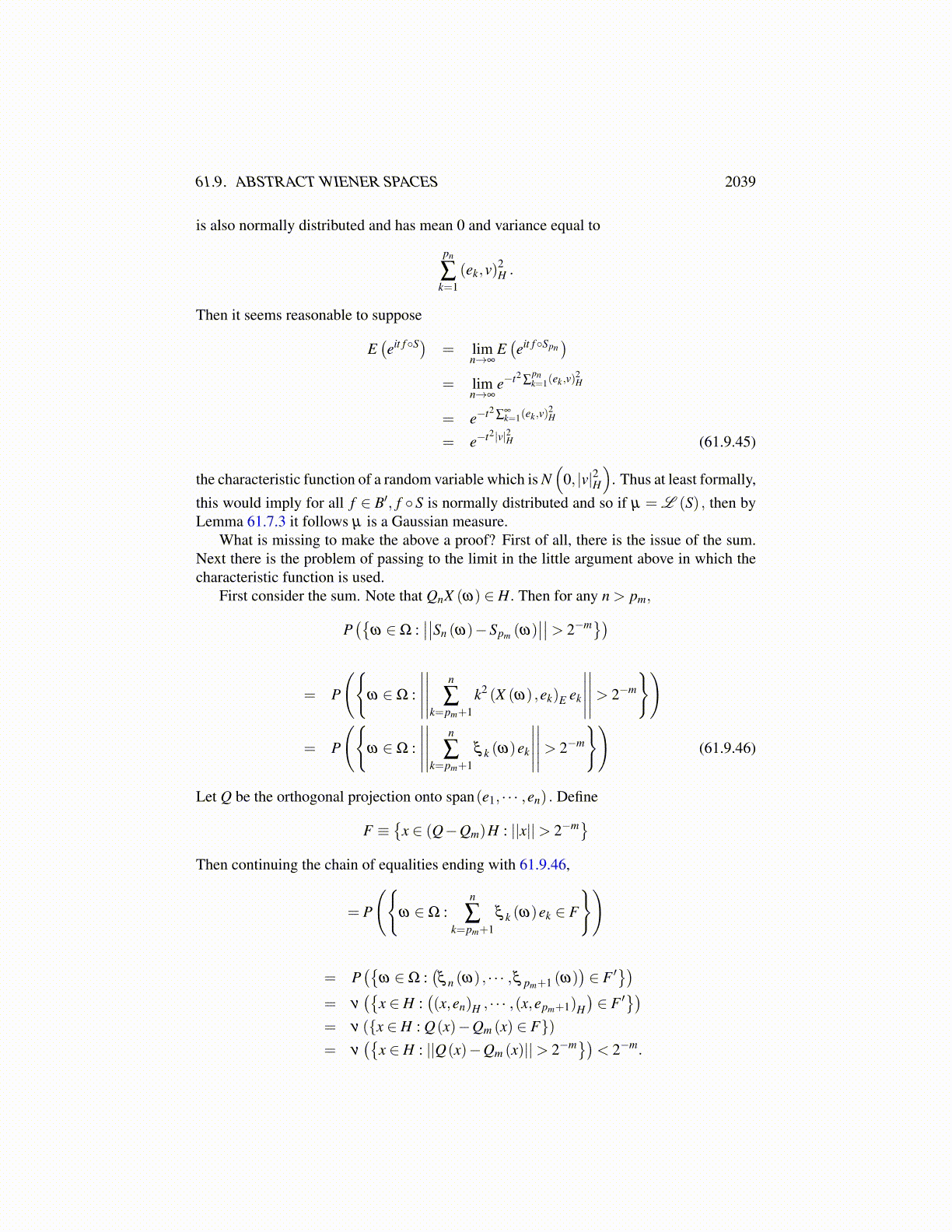
61.9. ABSTRACT WIENER SPACES 2039
Definition 61.9.12 A triple, (i,H,B) is called an abstract Wiener space if B is a separableBanach space and H is a separable Hilbert space such that H is dense and continuouslyembedded in B and the norm ||·|| on B is Gross measurable.
Next consider a weaker norm for H which comes from the inner product
(x,y)E ≡∞
∑k=1
1k2 (x,ek)H (y,ek)H .
Then let E be the completion of H with respect to this new norm. Thus {kek} is a completeorthonormal basis for E. This follows from the density of H in E along with the obviousobservation that in the above inner product, {kek} is an orthonormal set of vectors.
Lemma 61.9.13 There exists a countably additive Gaussian measure, λ defined on B (E).This measure is the law of the random variable,
X (ω)≡∞
∑k=1
ξ k (ω)ek,
where {ξ k} denotes a sequence of independent normally distributed random variables hav-ing mean 0 and variance 1, the series converging pointwise a.e. in E. Also
k2 (X (ω) ,ek)E = ξ k (ω) a.e.
Proof: Observe that ∑∞k=1
1k2 (kek)⊗ (kek) is a nuclear operator on the Hilbert space,
E. Letting {ξ k} be a sequence of independent random variables each normally distributedwith mean 0 and variance 1, that
X (ω)≡∞
∑k=1
1k
ξ k (ω)kek =∞
∑k=1
ξ k (ω)ek (61.9.43)
is a random variable with values in E and L (X) is a Gaussian measure on B (E) , the seriesconverging pointwise a.e. in E. Let λ be the name of this Gaussian measure and denote theprobability space on which the ξ k are defined as (Ω,F ,P). Thus for F ∈B (E) ,
λ (F)≡ P({ω ∈Ω : X (ω) ∈ F})
Finally, denoting by XN , the partial sum,
XN (ω)≡N
∑k=1
ξ k (ω)ek,
the definition of (·, ·)E on H and a simple computation yields
ξ k (ω) = limN→∞
k2 (XN (ω) ,ek)E
= k2 (X (ω) ,ek)E . (61.9.44)
One can pass to the limit because XN (ω) converges to X (ω) in E. This proves the lemma.